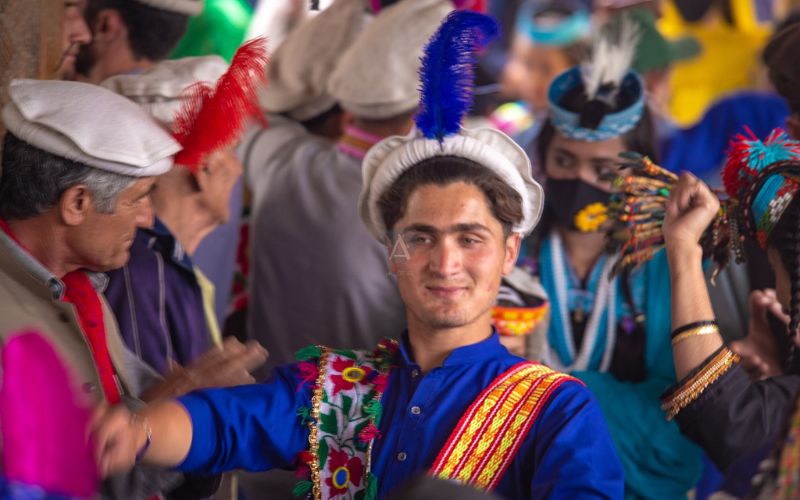Introduction
The Kalash people of Pakistan are one of the most unique and fascinating indigenous communities in the world. Known for their distinct cultural identity, the Kalash tribe in Pakistan is famous for its vibrant traditions, colorful festivals, and historical significance. Living in the remote Kalash Valleys of Bumburet, Rumbur, and Birir, these people have preserved their ancient customs and language despite external influences.
This article explores the origin and ancestry of the Kalash, their rich traditions, the challenges they face, and why travelers should consider visiting the Kalash valleys to experience their unique way of life. Don’t miss the opportunity to experience the Chilam Joshi Festival & Chitral Valley Tour, where you can witness the Kalash people celebrating their heritage.
Who Are the Kalash People?
The Kalash people of Pakistan are believed to be the descendants of an ancient civilization. Some theories suggest they have links to Alexander the Great’s army, which passed through the region over 2,000 years ago. However, their exact ancestry remains a topic of debate.
Today, the Kalash tribe numbers around 4,000 individuals, making them one of the smallest ethnic minorities in Pakistan. They primarily reside in the Kalash Valleys—Bumburet, Rumbur, and Birir—located in the Chitral district of Khyber Pakhtunkhwa. Despite their small population, the Kalash people have managed to preserve their distinct cultural identity through their traditions, language, and festivals.
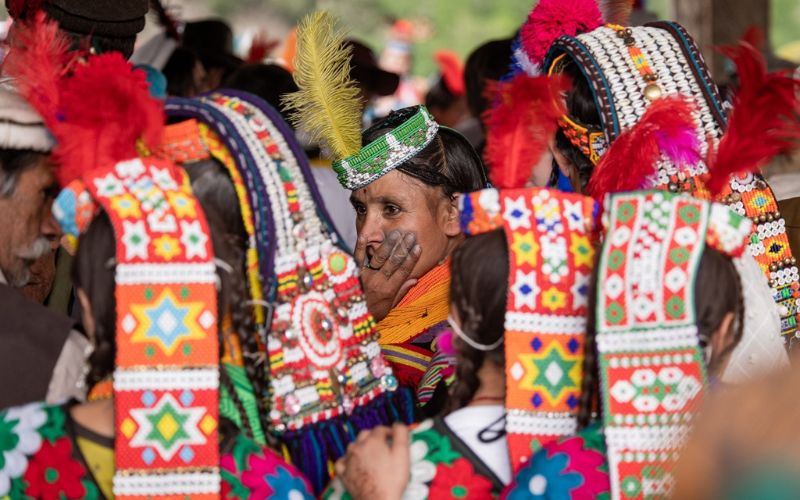
Kalash Culture and Traditions
The Kalash culture is known for its distinct language, lifestyle, and attire. The Kalasha tribe speaks the Kalasha language, which is part of the Dardic group of Indo-Aryan languages. Their daily life revolves around agriculture, livestock, and craftsmanship.
Traditional Clothing and Jewelry
The Kalash people wear unique, vibrant clothing. Women don elaborate dresses decorated with colorful embroidery and beads, while men wear simple woolen tunics. The headpieces worn by Kalash women, called “kupas,” are an iconic aspect of their traditional attire.
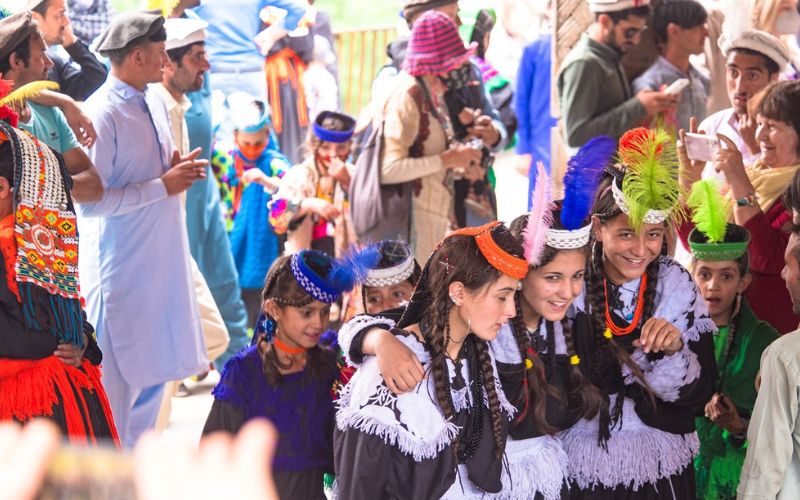
Role of Women in Kalash Society
Unlike many conservative societies in the region, Kalash women enjoy a relatively high degree of freedom. They actively participate in social, economic, and religious affairs and are recognized for their role in Kalash festivals and celebrations.
Unique Kalash Festivals
The Kalash festivals are a vibrant showcase of their traditions and beliefs. Some of the most famous Kalash festivals include:
- Chilam Joshi (Spring Festival): Held in May, celebrating the arrival of spring with music, dance, and rituals. If you’re interested in experiencing this incredible festival, consider joining the Chilam Joshi Festival & Chitral Valley Tour.
- Uchal (Harvest Festival): Celebrated in August to give thanks for the harvest season.
Chaumos (Winter Festival): The most important religious festival, observed in December, marking the end of the year with prayers and feasting.
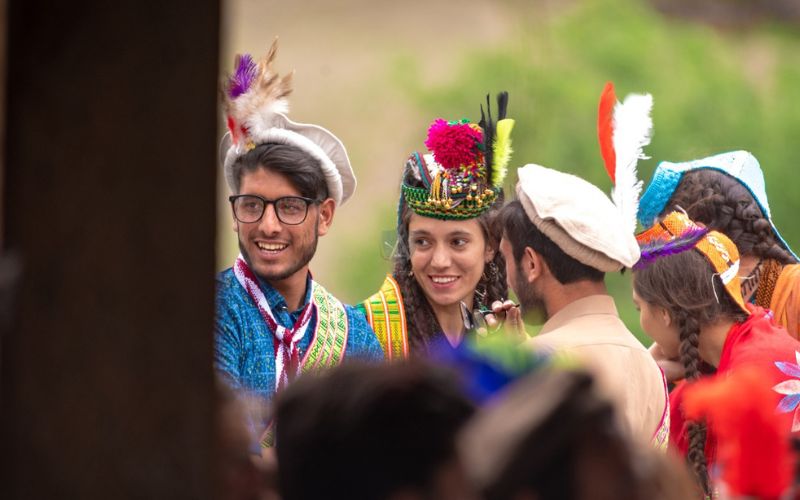
Challenges Faced by the Kalash Tribe
The Kalash population has been facing several challenges that threaten their cultural survival. Some of the most pressing issues include:
- Declining Population & Cultural Erosion: Due to intermarriages and conversions, the Kalash population has been shrinking, putting their traditions at risk.
- Modernization & External Influences: With increased connectivity, traditional Kalash customs are being influenced by mainstream Pakistani culture.
Efforts for Cultural Preservation: Both the Pakistani government and various NGOs have taken steps to preserve the Kalash heritage by promoting their culture and safeguarding their valleys.
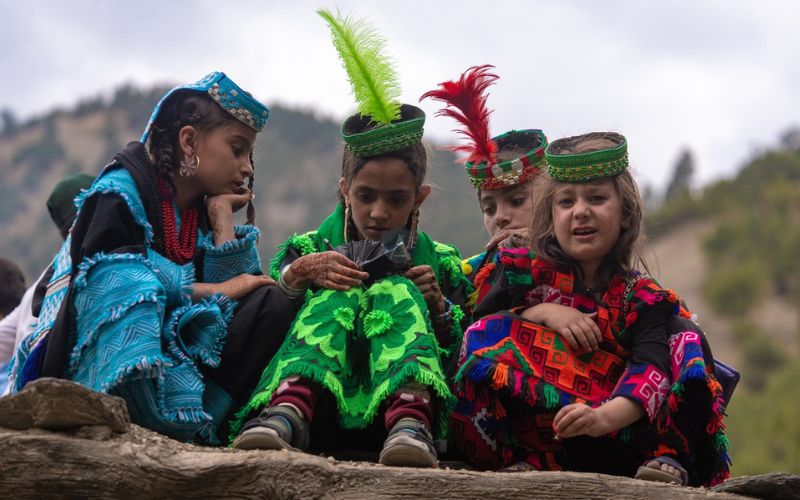
Why the Kalash Are a Must-Visit for Travelers
The Kalash valleys offer travelers an opportunity to experience a unique and ancient culture while enjoying breathtaking landscapes. Visitors to the Kalash tribe in Pakistan can expect:
- Warm Hospitality: The Kalash people are known for their friendly nature and openness to visitors.
- Eco-Tourism & Sustainable Travel: Travelers should respect Kalash traditions and support local businesses to ensure sustainable tourism.
How to Visit the Kalash Valleys: Accessible from Chitral, visitors can reach the Kalash Valleys by road. It is advisable to plan trips during Kalash festivals to witness their cultural celebrations firsthand. One of the best ways to explore the region is by joining the Chilam Joshi Festival & Chitral Valley Tour, which offers an immersive experience of Kalash traditions.
Conclusion
The Kalash tribe is a cultural treasure of Pakistan, offering a glimpse into an ancient way of life. Their unique customs, vibrant festivals, and deep-rooted traditions make them one of the most fascinating communities in the world. To ensure the preservation of the Kalash culture, travelers should practice responsible tourism and appreciate their rich cultural heritage with respect.

